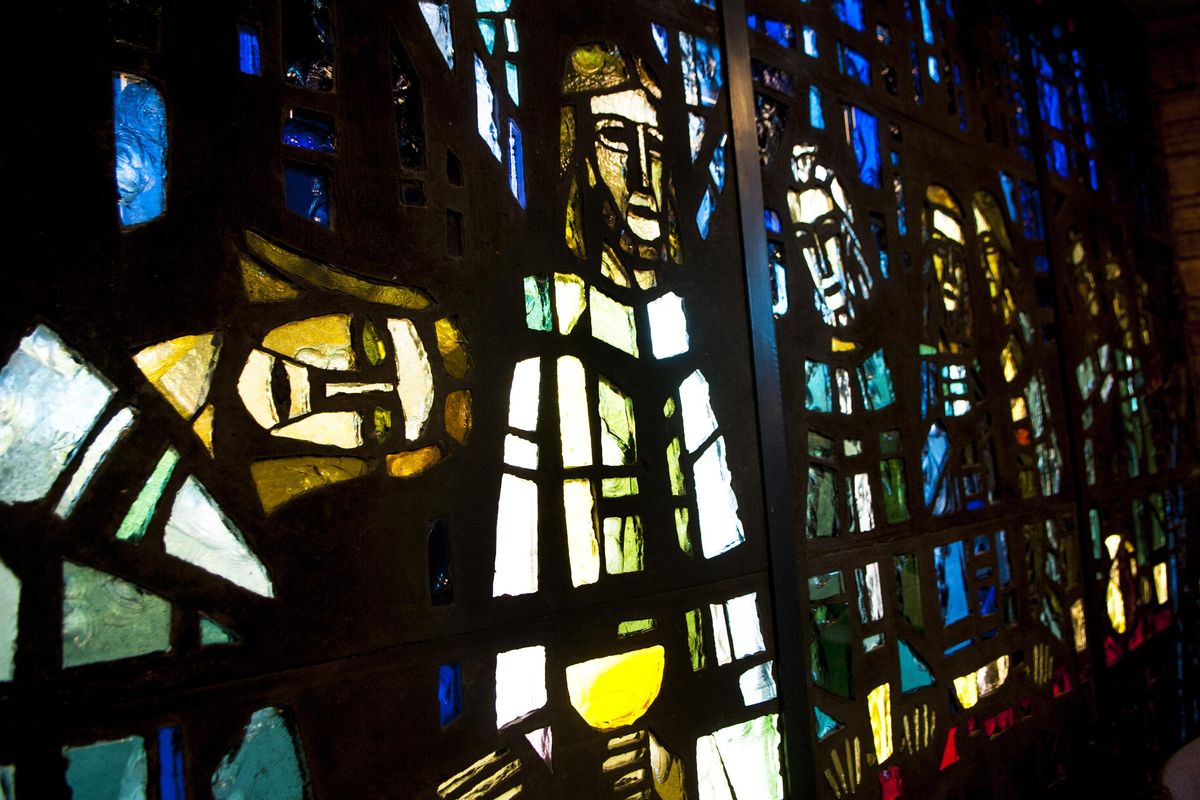Guest columnist Rebecca Nappi: Memories of a Spokane childhood shine, like light in stained glass

My mother, in one of her last gifts to us, died during a seller’s market. Several bidders expressed interest in our family home near Downriver Golf Course. The six Nappi Kids, as I still call us, though we range in age from 59 to 75, felt happy that a family with young children got the house.
About once a month, I turn down the street of our old neighborhood on my way home from work, just to get a glimpse of that childhood home – a sturdy, stately shelter that will likely outlive all the Nappi Kids.
I’m in my early 60s now, a time of life Canadian journalist Ian Brown dubbed “the adolescence of old age.” Within a year of turning 60, my mom died and two close friends lost their lives to horrible cancers. At least two dozen friends and acquaintances, also in this adolescence of old age, have broken their hips, replaced their knees, crashed on their bicycles, caught pneumonia, undergone major heart surgery, formed blood clots for no reason, gone septic. A few died. Most, like me, worked at staying healthy – ate right, exercised, didn’t smoke, didn’t drink too much. Yet one day they felt fine, and the next day they were in intensive care. Every Sunday, I know at least one or two people in the obituary section of this newspaper. My niece Nichole said recently: “You sure go to a lot of funerals.”
I ponder the strangeness of this second adolescence by visiting places with great health and longevity – the schools, churches and parks of my childhood. In Spokane, we preserve things, because they are priceless examples of architecture or sacred green spaces or because there’s no money to tear down old things and replace them.
Our spark-then-sputter-then-stop economy has resulted in one real advantage. Where you hung out in childhood is likely still there.
St. Charles Catholic Church on Spokane’s North Side, dedicated in 1961 and recently refurbished, is famous in international architectural circles. I sit in there some Sundays and gaze upon the same modern-art stained glass windows I stared at during Mass as a child. An artist from Chartres, France, created them, and his rendering of symbols from Christ’s crucifixion – nails, a crown of thorns, dice – rival abstract pieces in famous museums.
The church always evokes memories of Monsignor Oakley O’Connor. He was a visionary and futurist in the guise of a traditional parish priest. When he was an old-old man, he visited me one day at the newspaper. I put aside the article I was working on, despite a looming deadline, and we reminisced for hours. A few days later, he tumbled down some steps and died.
The Gonzaga University campus was like a plain, homespun girl when I went there in the 1970s. Now, with its dazzling buildings, upscale dorms and gorgeous landscaping, it’s as if the plain girl got discovered by Hollywood. But the steps in the 1898-built Ad Building, now called College Hall, are still worn away from thousands of footfalls. My father’s 1939 football team photo hangs in the main corridor. I visit that photo a lot, remembering how Dad’s education lifted him out of Depression-era poverty and how he passed along his love of learning and his belief that to hold a job, any job, is always an honor.
In the late-teen years of my first adolescence, in that “who am I, what am I supposed to do with my life?” phase, a friend gave me “Letters to a Young Poet” by Rainer Maria Rilke. His advice to a young person grappling with the meaning of his life? “Live the questions now. Perhaps you will then, gradually, without noticing it, live along some distant day into the answer.”
I am living a lot of questions these days. For example, if there’s already so much loss in this adolescence of old age, what will happen when the 70s and 80s hit?
But I’ve also lived into a few answers. Visit your childhood touchstones. If an old friend suddenly reappears in your life, drop whatever you are doing and reminisce. Gratitude is a powerful antidote against grief. It’s never too late to thank people, even if they’ve died. Prayer helps, if you’re the praying kind. Those broken hips, sepsis, cancer, heart surgery? No one is immune in this adolescence of old age. My prayer has switched from “There but for the grace of God go I” to “Thank you, in advance, for grace and dignity to handle a health crisis.”
On the corner a few steps away from my childhood home, we caught the Hollywood Royal Court bus. The stop was removed years ago, and the fanciful names of Spokane’s bus routes replaced by numbers. The summer I turned 16, I rode the Hollywood Royal Court bus every weekday to driver’s ed class at Lewis and Clark High School (still there, by the way). Age 16 to 61 passed in a flash. How did that happen?
To ponder that, I plan to drive to the Bowl and Pitcher area at Riverside State Park and cross the swinging bridge and sit in the wood shelter. My sister Janice carved her initials there, along with her boyfriend’s initials, 50 years ago. She’s still around, thank God, and I’m hoping her initials are, too.
Rebecca Nappi wrote for The Spokesman-Review for 28 years and is enjoying her “encore” career in health care. She’s filling in for columnist Doug Clark, who’s on vacation.